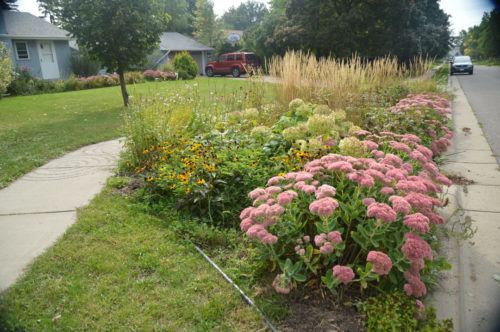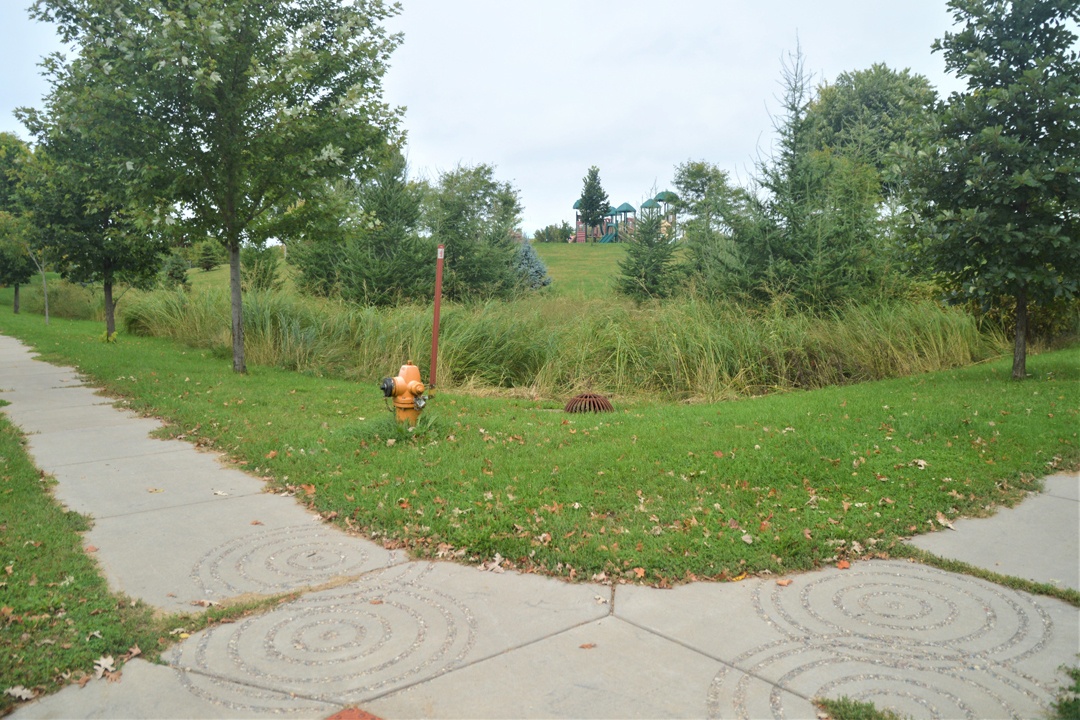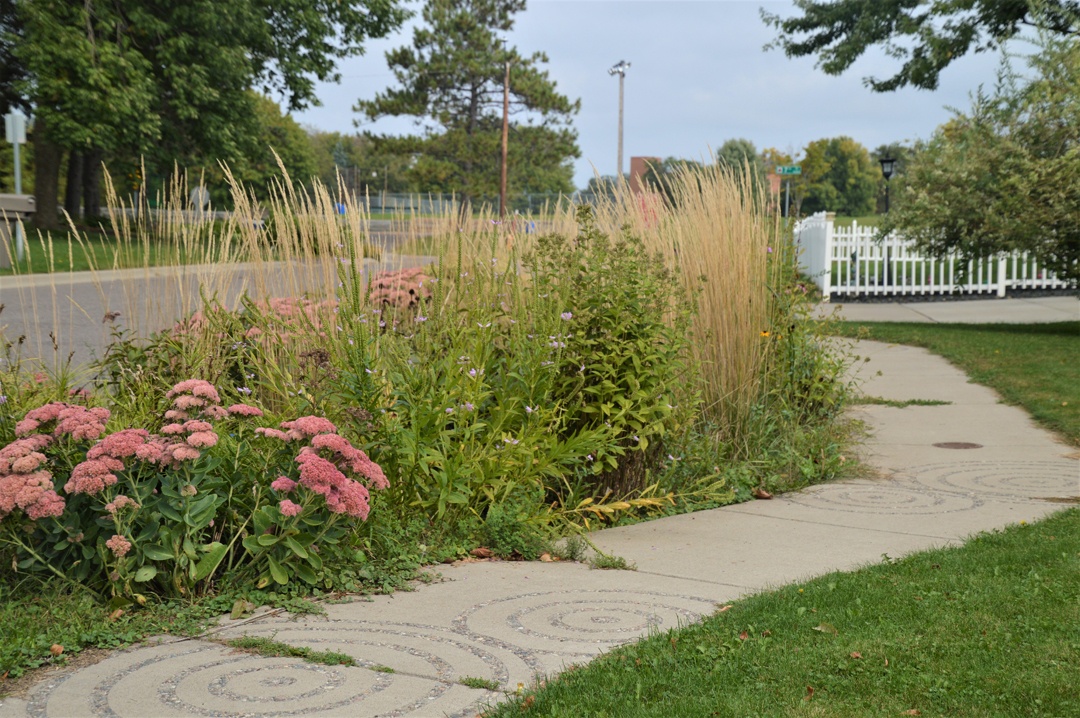


Maplewood Living Streets
A demonstration project to benefit residents and improve water quality.
Unlike existing streets that are only designed for cars, living streets are designed for cars, people and the environment. Rainwater gardens and street trees remove pollutants from stormwater before the water enters area lakes, helping to improve lake quality. Narrower streets and trees also slow traffic, creating a safe environment for everyone. Bike trails and sidewalks make it easy for all residents to exercise and connect with neighbors.
For this project, the streets were designed to be 24 feet wide rather than the typical 30 to 32-foot street width. The project included 32 rainwater gardens and one larger regional basin, 200 boulevard trees and 1.5 miles of sidewalk. Even with the addition of sidewalks, overall pavement was reduced by an acre.
Following project completion, 50 percent of the rainwater runoff is filtered or infiltrated, 40 percent evaporates and only 10 percent of the water runs directly into storm sewers.


